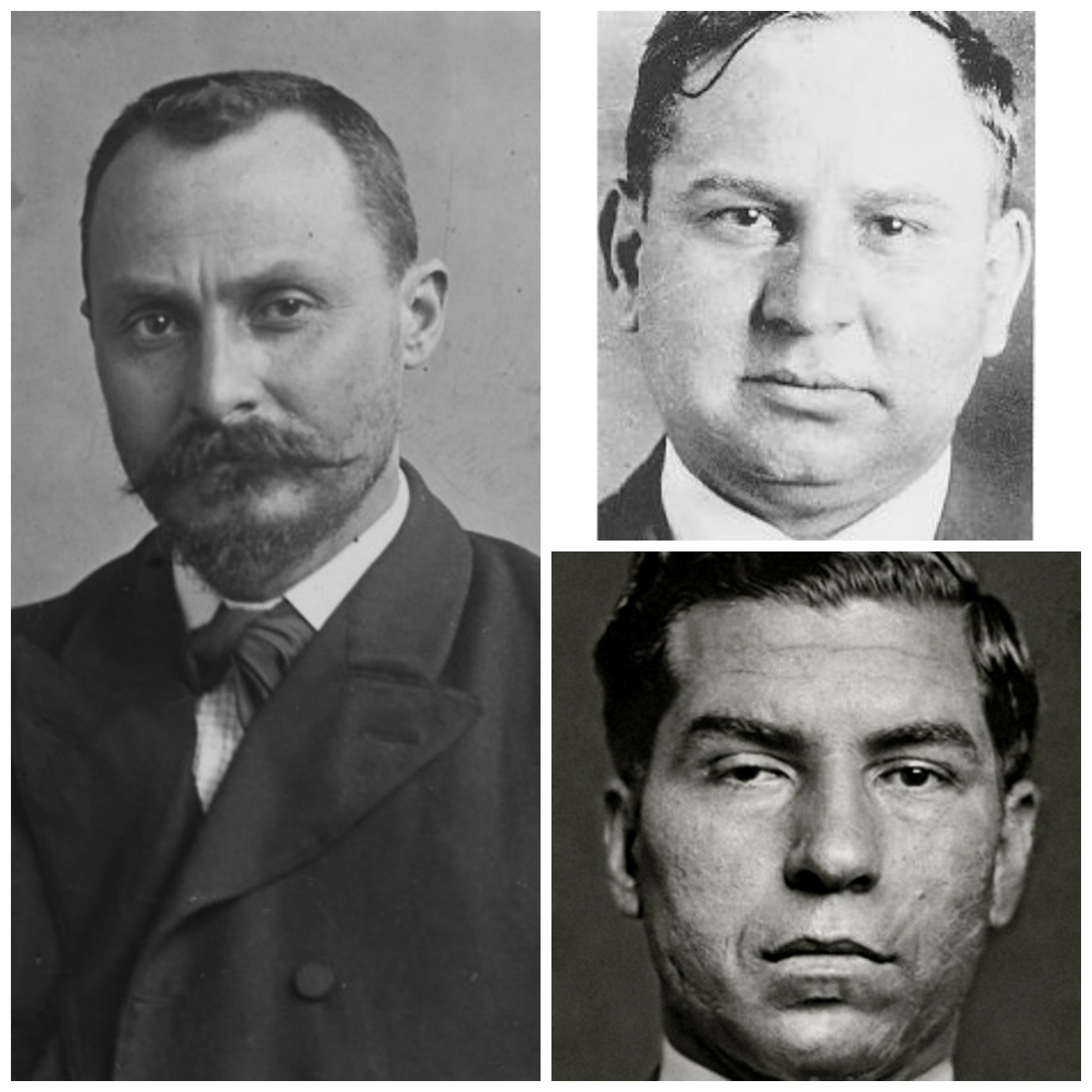At the end of Prohibition, the Young Turks fought a colonial war for the Sicilian Mafia in New York.
The Families of the Genovese and Lucchese trace their roots directly to two mafiosi from Corleone: boss Giuseppe Morello, and his captain, Gaetano “Tommy” Reina. During the first Mafia war in New York, between the Corleonesi and the Napolitani, Morello’s half-brother Nick Terranova was killed by one of the Camorra (the Neapolitan Mafia), and their brother Vincenzo took over the Morello-Terranova Family. Reina left and formed his own Family, which he put under the protection of Joe Masseria (originally from Menfi, a coastal town in Agrigento province) in the late 1920s.
Prohibition strengthened the Mafia, providing them the opportunity, according to Joe Valachi, to get into racketeering in a big way, on the level with other, non-Mafia criminal organizations operating in the US. In 1922, Masseria survived an assassination attempt. He made Morello his conisigliere. Increasingly, the Mafia in the US overcame its provincial prejudices enough to forge working relationships with Jewish, Irish, and African-American criminals, and for the first mixed gangs to form. Yet a long simmering antagonism between Sicilians from Corleone and those from Castellammare del Golfo flared once more at the end of Prohibition.
The Castellammarese War of 1930 in New York was a colonial war. On one side was Joe Masseria, the most powerful figure in organized crime, with a coalition of allies including the Corleonesi Giuseppe Morello, Lucky Luciano (from Lercara Friddi), and Al Capone (born in New York of Italian mainland parents). On the other side were Salvatore Maranzano and the Castellammarese, backed by Don Vito Cascio Ferro, one of the most powerful men in Sicily at the time. Cascio Ferro sent Salvatore Maranzano to New York to form a monopoly on criminal enterprise. When Joe Valachi got out of prison the first time, he emerged to learn of “trouble in the air” between Tom Gagliano and Ciro Terranova. This was the beginning of the war.
This war is often characterized as one between the “Young Turks” behind Masseria, and the “Mustache Petes” on Maranzano’s. Although Masseria was killed first, it was the Young Turks who ultimately won New York.
Cascio Ferro had lived for a few years in the US, in New York and in the South, like the Morello-Terranova family. He escaped prosecution for his participation in Morello’s counterfeiting racket, and returned to Sicily in 1904. His power there extended over several towns, including Corleone, where he temporarily eclipsed the native Fratuzzi. In 1909, he ordered the murder of the American policeman, Joe Petrosino, who pursued him on charges of killing Benedetto Madonia in New York, the famous “Barrel Murder.” Following his arrest in 1925, Ferro’s star began to fall. Mussolini’s prefect in Palermo, Cesare Mori, attempted to stamp out the Mafia entirely, from 1925-29. Ferro was imprisoned for life, beginning in 1930.
Before the Castellammarese War, Tommy Reina began paying tribute to Joe Masseria. Masseria put additional pressure on Reina, who may have switched to Maranzano’s side. Whether he did or not, the rumor of it reached Masseria, who ordered Reina’s murder. Masseria was killed in April 1931. Accounts of Masseria’s assassination vary and legends abound. It appears that the animosity came from his own men, who resented the war’s effects on their own profits.
Maranzano, the victor, held a meeting in which he laid out many of the structural details that would later form Lucky Luciano’s “Commission”: the rules that would permit the peaceful coexistence of New York’s Five Families, as well as Mafia families in other American cities. Despite these signs of progress, Maranzano was regarded by his lieutenants as another “Mustache Pete.” Besides his support from the clannish Castellammarese, there was his distrust of Luciano’s Jewish associates. The “Young Turks” struck again. Maranzano was killed five months after Masseria.
Featured Image: Vito Cascio Ferro (left), Joe Masseria (top right), Charles “Lucky Luciano” (bottom right)
